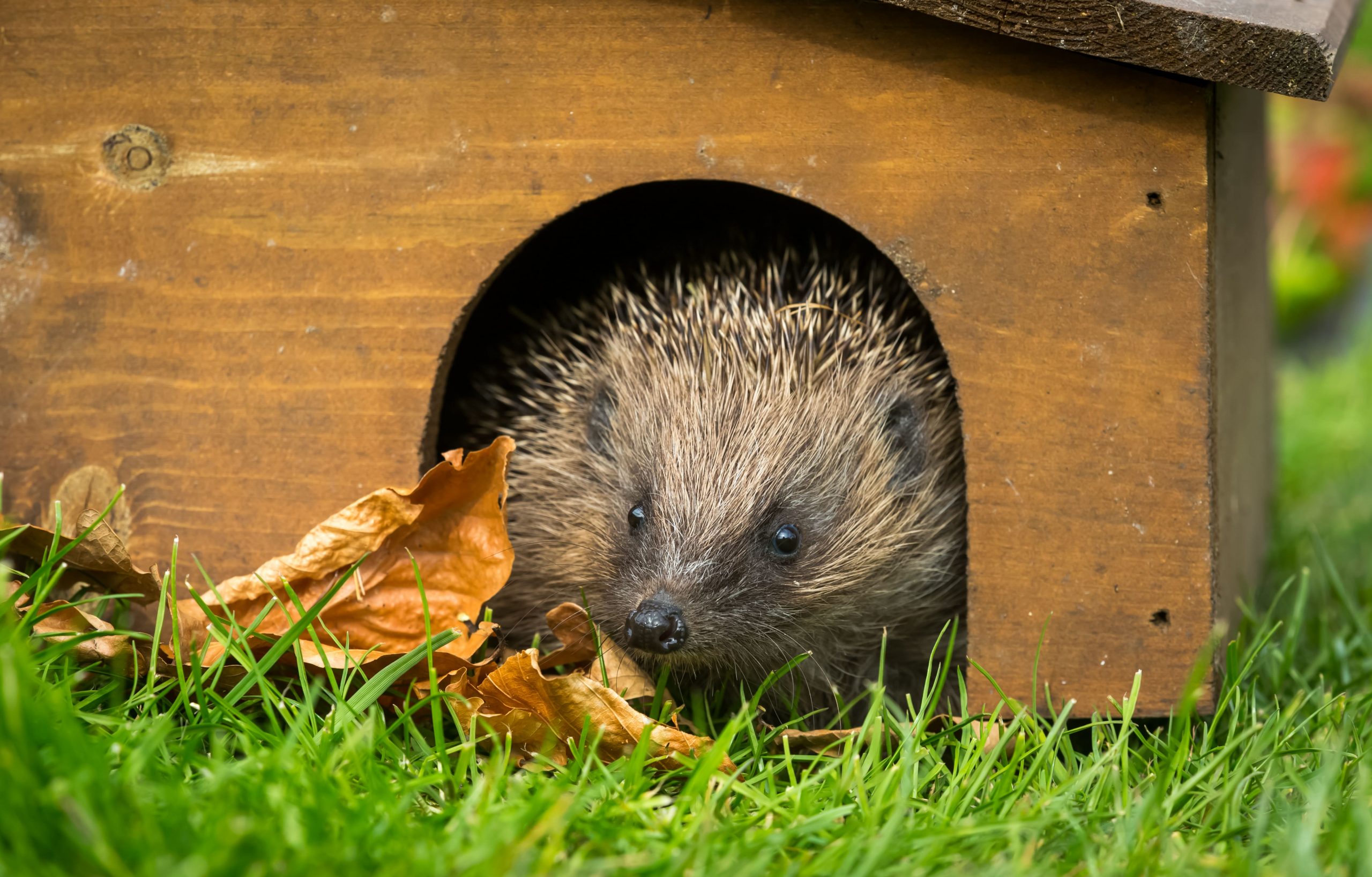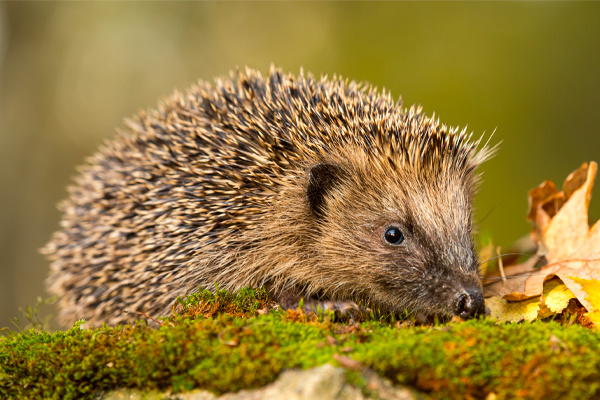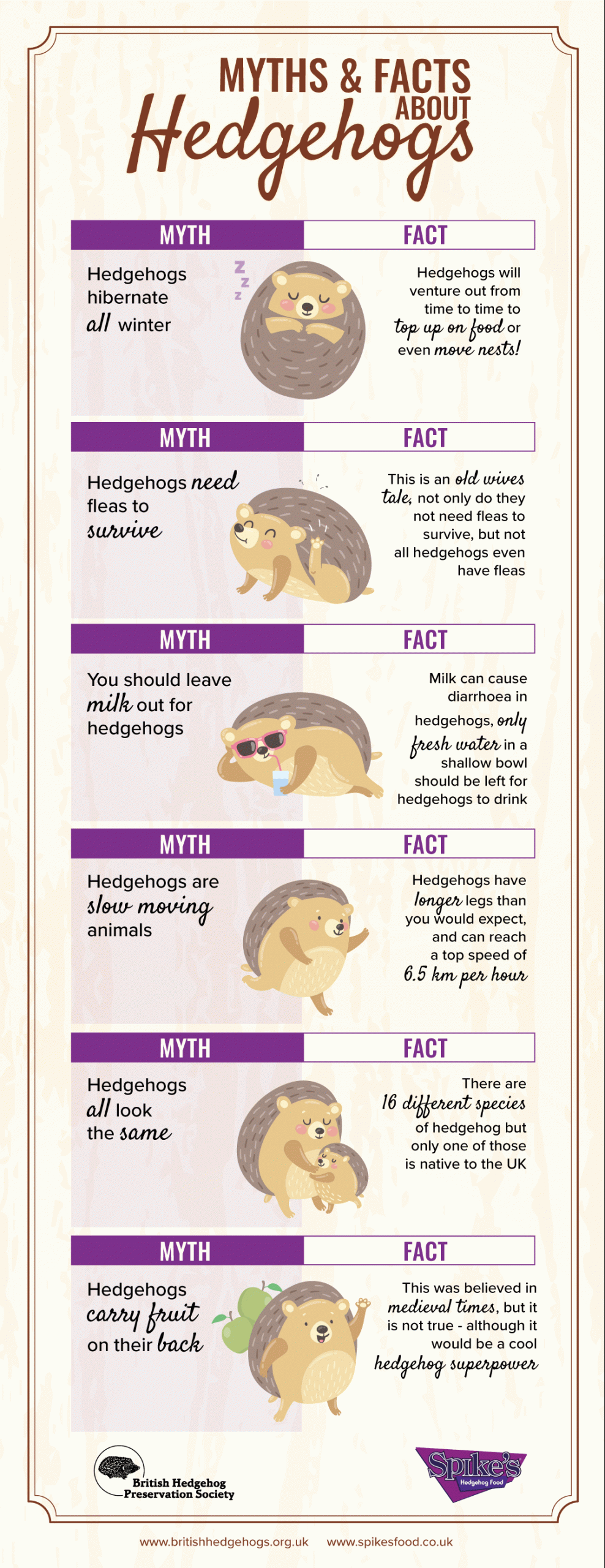
In the wild, hedgehogs have quite a varied diet as they eat lots of creepy crawlies, called invertebrates, such as: worms, beetles, slugs, caterpillars, and millipedes. Hedgehogs have been known to attempt to eat wasps and bees before as their stings interestingly do not affect them, but hedgehogs will usually enjoy eating frogs, baby rodents and bird’s eggs, too – if they are lucky!
As hedgehogs are nocturnal animals, they hunt for the delicious creepy crawlies at night, which can often be found in hedgerows, undergrowth or in the soil. When hedgehogs are foraging for their dinner, they often make a loud snuffling noise as they search. Some people say this sounds similar to a pig’s grunt, which is why they are called ‘hedgehogs’.
Feeding hedgehogs in your garden
With winter fast approaching, food in the wild will soon become sparse, meaning not all hedgehogs will have enough fat stored. For this reason, you should provide food for wild hedgehogs in your garden ahead of the change in weather.
In your garden, you should try to provide a safe habitat for hedgehogs and supplement their natural diet. You can do this by providing nutritious dry and wet food that is high in protein in your garden, such as Spike’s Crunchy Dry or Spike’s Meaty Feast. This will not replace their natural diet, but instead act as a supplement or an addition.
You should also leave out a shallow bowl of fresh water every night for the hedgehogs so they can stay hydrated while on their journey. It is important that you do not leave out milk for hedgehogs, this is a common myth, as they are lactose intolerant and milk can make them quite ill.
Building a hedgehog feeding station
Putting food out in your garden is bound to attract other types of wildlife, including predators, like foxes.
To prevent this from happening, you could create a hedgehog feeding station, which will make it much more difficult for larger animals to access and steal the food that is intended for hedgehogs. The station could be created from an upside-down plastic box with a piece of piping leading inside, where the food and the water will be safely placed.
As multiple hedgehogs could be feeding from the same station, be sure to wash the compartments thoroughly and use shallow bowls for your spiky visitors and be sure to keep these separate from those that you use yourselves or for other pets.



